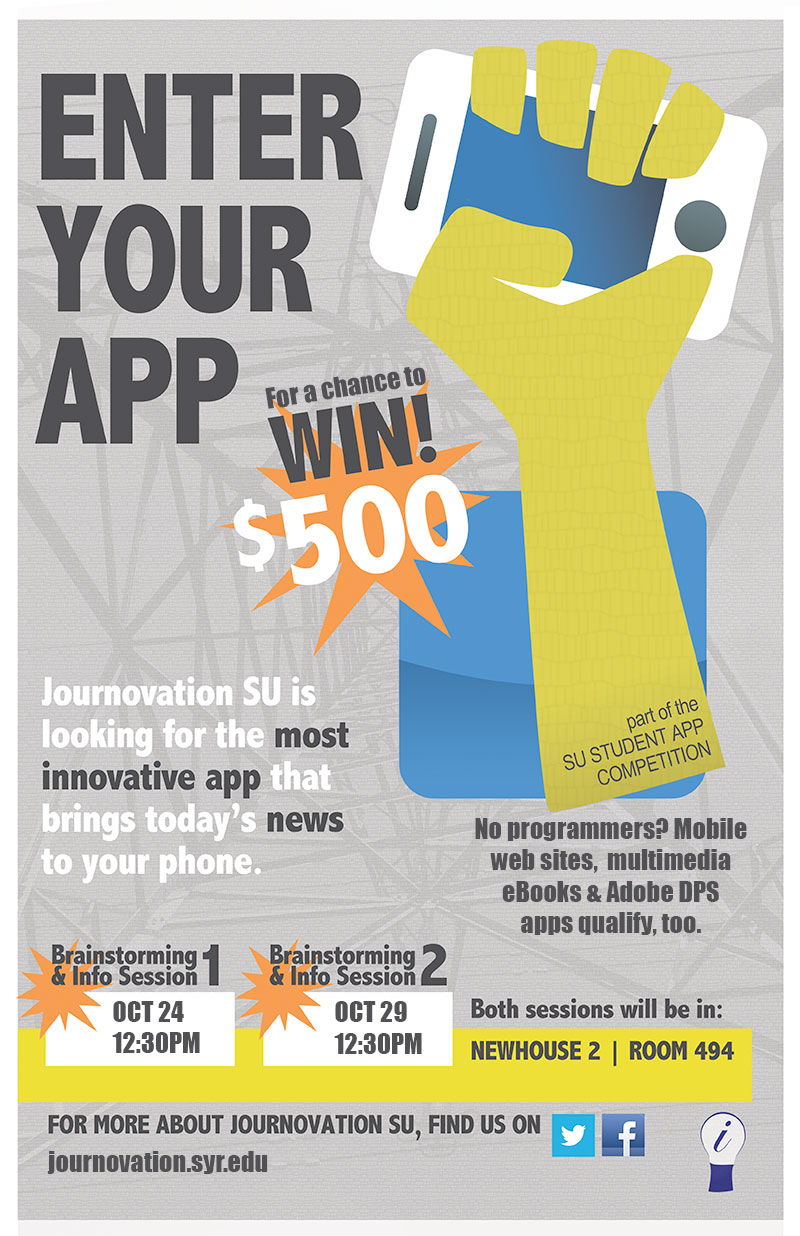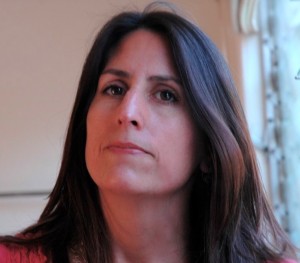Monthly Archives: October 2012
Innovative coverage of superstorm Sandy
October 30, 2012
First of all, we hope you are safe and that your loved ones are safe. Our thoughts and prayers go out to everyone affected by Hurricane / Superstorm Sandy.

A PATH station in Hoboken, N.J. flooded in the storm surge of Hurricane Sandy on Monday, Oct. 29, 2012. (AP Photo/Port Authority of New York and New Jersey)
Natural disasters bring out many of the cliches of traditional media (reporters standing in the middle of a storm surge, photos of empty store shelves, and so on). But they also bring out some of the best and most useful work journalists perform for the public: keeping people informed about what’s happening in real time, helping them find local assistance, identifying dangerous areas to avoid, and telling those who aren’t in harm’s way how they can help.
With that in mind, we’ve been looking for the most innovative digital coverage of Hurricane Sandy. Here’s what we’ve found so far. Found something else? Post a comment below.
Local Resources and Grass Roots Media
- Jersey Shore Hurricane News: Operating completely on Facebook, this “bottom-up, two-way news outlet” is posting photos, videos and critically important aid information to people on the New Jersey coastline and many others who are looking for ways to help. It’s also serving as a community hub for people who are looking for missing people and lost pets. The site launched after Hurricane Irene in 2011 with 27,00 followers, and is already up to over 140,000.
- MTA on Flickr: The Metropolitan Transportation Authority that’s responsible for the New York subways and buses is posting photos of the transportation damage on its Flickr feed.
- The Hurricane Hackers group, a project of the MIT Media Lab that software programmers and data geeks are using to create new tools to assist during the aftermath of the storm.
- CNN iReport Sandy Damage Open Story: CNN-curated user videos of hurricane damage zones. Every video shows its location on a map to the side, and you can navigate through the map to find videos of specific areas. Users can also upload to the page, or from the iReport app.
Maps and Mapping APIs
- New York Times’ Power Outage Map: Shows power outages in and around New York City, with time graphs showing how many customers are without power. Updated every 15 minutes.
- The Guardian’s Sandy Map: The Guardian’s Data Blog is tracking and mapping verifiable events in Sandy’s aftermath. Every event includes a link to more info, and the ability to download full data as a Google Fusion table. (Thanks to our friends at the Center for Innovation in College Media for sharing this).
- Google’s Hurricane
#Sandy map showed the most recent hurricane cone prediction as it approached land, but also has other information layers — such as storm surge probability.
Live Coverage, Curation and Aggregation
- DigitalFirst Media’s Hurricane Sandy News: This topical aggregation page was going all day and night featuring the latest news from affected areas. It took wire reports, local reports, and combined them into one site.
- New York Times’ Sandy Webcam: The New York Times put a webcam on top of its roof and posted an updated picture every minute — now compiled into an animation. It provides a time-lapsed view of the storm over three days.
- Buffy’s World: Buffy Andrews of the York Record created several interesting and well-done slideshows on her blog using photos found via social media.
Data Visualization and Infographics
- Hint.fm’s Wind Map: A beautiful visualization of surface wind data from the National Digital Forecast Database, revised once per hour. Note that while the map uses real data, it should not be used for navigation, flight planning or anything mission-critical.
- New York Times Infographics: The Times also posted some good interactive infographics the morning after the storm.
- WNYC Flood Gauge: WNYC in New York had a real-time flood gauge, allowing people to see exactly how high the New York City rivers were in real time.
Creative Use of APIs, Data

The Inlet section of Atlantic City, N.J. is flooded as Hurricane Sandy makes it approach on Monday Oct. 29, 2012. (AP Photo/6abc Action News, Dann Cuellar.
- Instacane: Instagram is growing in popularity as a news source in breaking news, as people are using it to share and post photos they take (rather than Flickr, Facebook or Twitter). This app allows users to create galleries of Instagram photos.
- The IRE News blog has a great post about how data journalists spread information about the storm.
- NJ.com #NJopen Twitter Feed: Sometimes the best innovations are also the simplest. NJ.com is using the Twitter API to pull in live tweets hashtagged #njopen and #njgas so residents can quickly find out where to get food, and where to get gas.
Fact Checking
- Poynter’s Fake Photo Tips: There were plenty of photos posted yesterday that were fakes, either new or recycled from other disasters. Poynter provided some good tips on how to spot a fake.
- The Atlantic also did its best to fact-check them and clearly label the fakes.
Noteworthy New Tools
- SeeClickFix: This app for iOS and Android lets you post problems that need to be fixed. The startup made its platform available for free to any media in hurricane affected areas to create widgets.
All photos on the main page linking to this post are courtesy of the Associated Press.
– Dan Pacheco & Brian Moritz.
Reserve a spot in our News App brainstorming sessions
October 22, 2012
“App” sounds like a lot of hard development work for journalists, but it’s not. If you have good content there are some very easy, inexpensive ways to make it mobile-friendly that qualifies for the contest. Come to one of our two one-hour lunchtime info sessions (Oct. 24, Oct. 29) in Newhouse 2, 494 to learn about the following:
- Creating multimedia eBooks using Apple’s free iBooks Author tools.
- Creating a WordPress site with a mobile-friendly theme.
We’ll also have FOOD, so you can learn about how to make mobile apps and chow down at the same time. PLEASE RSVP to one of the two events on EventBrite here if you plan to attend so we can get enough food: http://journovationapp.
Hope to see you there!
Brainstorming sessions for News App contest
October 18, 2012
As we announced yesterday, we’re excited to be a part of the SU Student App Competition. We’re offering a $500 prize for the best student-designed news/journalism/civic media app.
 If you want more information on the contest, if you have an idea for an app but don’t know what to do next, or if you’re interested in this but don’t know where to start, we’re holding a couple of brainstorming sessions in the next two weeks:
If you want more information on the contest, if you have an idea for an app but don’t know what to do next, or if you’re interested in this but don’t know where to start, we’re holding a couple of brainstorming sessions in the next two weeks:
The first is Wednesday, Oct. 24, 12:30 p.m. The second is Monday, Oct. 29, 12:30 p.m.
Both sessions will be held in our office in Newhouse 2, Room 494. We’ll provide some food and the space to work on your idea and maybe find some collaborators.
If you have any questions, you can email Dan or Brian. Or follow us on Twitter.
Create the next great news app for a chance to win $500
October 16, 2012
 Any SU student who has a mobile app, or mobile-friendly web site, that has journalistic value should consider entering it into the SU Student App competition: http://idea.syr.
Any SU student who has a mobile app, or mobile-friendly web site, that has journalistic value should consider entering it into the SU Student App competition: http://idea.syr.- Innovation: How unique and creative is the app? Are there similar ideas out there? What makes the app better than others?
- Integrity: How robust is the app? Is the app just a functioning prototype or well-tested and ready for release?
- Impact: How useful is the app? Who will be using it? How will it change people’s lives and society?
Team Eligibility:
- At least one team member must be a full time SU student. Both graduate and undergraduate students are eligible. There is no limit on the number of team members.
- In order to receive an award, at least one team member must have the legal status to receive a monetary prize.
Requirements:
- Each competing team must develop an app: a set of software programs that runs on one of the following platforms:
- Web browsers e.g. Firefox (“web app”)
- Smart phones e.g. iPhone (“mobile app”)
- Tablet computers e.g. iPad (“tablet app”)
- Desktop operating systems e.g. Windows (“desktop app”)
- Programmable hardware platforms e.g. Arduino
- At least 50% of the code must be written by the team members (which must be either current Syracuse University students or 2012 graduates of Syracuse University), with the exception of the use of software libraries (e.g. APIs, SDKs) that are available to the public through licensing, which may be proprietary or non-proprietary.
- The majority (more than 50%) of the code must be written during the 2012-2013 academic year by the SU students on the team.
- Each team must demonstrate the functioning app at the Demo Alley section of Entrepalooza, on the day of the competition, after passing the first round of judging.
- Each team can submit only one app and each individual in the competition can belong to only one team.
- Each application must include all the required information on the application form. The entire source code is not part of the application. However, the source code of the app must be accessible to the judges and organizers upon request after the submission through the period of competition.
- Each team must be the legal owner of the entire software submitted to the competition.
- A submission may be disqualified if it fails to comply with any of the requirements above.
Comic book sports coverage: Journovation interview with Don Morris
October 15, 2012
One of the neatest things I’ve seen in the sports pages lately came last month in the Tampa Bay Times. To commemorate the one-year anniversary of the end of the 2011 baseball season – in which the Tampa Bay Rays clinched a dramatic playoff berth on the last day of the season – the Times retold the story of that day in comic book form.
I interviewed Don Morris, who drew the comic book, about the project via email:
Where did the idea for a comic book narrative come from?
I’m a big fan of comic narratives and have been looking for an opportunity to do one in our own paper. I have always done journalistic sketchbooks to report everything from the Super Bowl in Tampa to hurricane evacuation centers at the height of storms. A comic narrative to me was the perfect next step to retelling a news event in a dramatic and fun way. Problem has always been getting the time to do this.
When this idea first came up, what was your first reaction?
I brought the idea of doing a comic narrative for Game 162 with my good friend Curtis Krueger, a writer friend of mine at the Times. His beat is courts, but he is a big Rays fan. We started talking about this for a year ago about a week after the historic game. When spring training came around in March, we wanted to do it in our annual Rays season preview section. Problem was it was a look back – not a look forward, duh. So we aimed for the All Star break, but I couldn’t get the time to sketch due to some special projects, vacation and the usual news events that keep us from doing these types of enterprise projects.
What about this story lent itself to being told in this format?
1. The biggest reason is that Game 162 was called the greatest regular season game ever played by baseball experts throughout the sports world. That made this an iconic event, especially to Rays fans immediately.
2. I listened to the game by radio because I couldn’t be near a TV. As a result, I pictured the whole game the way I used to when I was a kid. It made the game all the more memorable to me. The experience of listening by radio made the game take on a legendary feel to me right away. I grew up reading sports comics in the newspaper so I knew this would be a fun game to recreate with comics. It also would help me connect visually to the game.
3. Besides the breaking news and follow-up coverage of this amazing game and all the visuals that go along with that, highlights from the game were rehashed countless times throughout the year by the Rays organization and our own local media. This was another way to retell the story in a way fans could reconnect and celebrate anew on the one year anniversary.
What was the drawing process like?
Once we had a storyboard, the drawing part was fun – even with lots of pressure. Storyboarding is crucial because it allows the script and drawings to “dance” as one. By having the storyboard, I knew exactly what I was looking for in reference and what I wanted to do on the pages. Believe me, it’s not fun to sit down at a drawing board without a plan and even worse to get done and have to go back to redraw! The drawing process for this project was highly pressurized because I had only a week and a half to do all drawings and get them on the page so text could be refined and of course go through all editing stages.
What’s the reaction to this been like, both inside and outside the newsroom?
The reaction has been enthusiastic in the community and our newsroom. The online version was published on the Friday before it appeared in our Sunday paper and shared hundreds of times on Facebook. We overprinted the section and distributed it at the last game of the season to fans at the game. I have to admit, I was surprised at how surprised my Times colleagues were to see this type of storytelling in our newspaper. We have always prided ourselves at our willingness to tell stories in unconventional ways.
Was there any thought into making this an interactive story?
In the very beginning, we fancied making this an e-book and including video clips and audio interviews. That is our goal for the next time we do this.
What did you learn from doing this?
This reconfirmed to me that even with a very short period of time to produce something like this, it’s possible when everyone buys in on an idea and clears the deck to make its completion possible. This project reinforced for me how special The Tampa Bay Times is as a place for telling stories in unconventional ways.
Are you a comic book fan? If so, what’s your favorite?
I’m not so much a comic book fan as I am a fan of illustrated stories. If it’s a good story and it’s illustrated and designed in a compelling way I love it. It doesn’t matter whether it’s in a book, magazine, newspaper or online. My favorite right now is Josh Neufeld’s “New Orleans After the Deluge” (Pantheon Books).
Dan Pacheco at Communications and Society Class
October 4, 2012
Dan Pacheco, our Chair of Journalism Innovation, recently spoke to a Newhouse Communications and Society class about the history of participatory media in journalism, and where things are headed next. Here’s a Storify of real-time reactions to his presentation and some additional commentary.
Repost.us: a New Model for Networked Journalism
October 3, 2012
My favorite innovations are the ones that are so easy and obvious that you hit yourself in the head every morning asking yourself, “why didn’t I think of that?” Repost.us is in that camp.
Repost.Us’ founder John Pettitt, also co-founder of e-commerce company Cybersource and career networking company Beyond.com, calls Repost.Us “Syndication in the 21st century.” He explains it this way: “If you see an article and want to repost it on another site, you have to find a human being and find out if you can do it. And that’s so last-century … there’s a better way. The video world has the embed. Why can’t you embed an entire article?”
[youtube]https://www.youtube.com/watch?v=lj6l-hHCh6I[/youtube]
He has a point. A huge part of the blogosphere consists of sloppy rewrites and citations of other peoples’ content, usually (but not always) followed by a link to the full story on the originating site. These links are helpful to the content creators because it helps their SEO in Google, and also gets them a few more ad impressions for people who click through, but the click-through to those links is not terribly high.
As a result, a whole generation of content companies have emerged in recent years to aggregate, curate and make money off content that they simply found, but didn’t pay to create. For investigative journalism this is particularly problematic because the cost of those stories is never covered by the ads to the few readers who click into the original story.
This is where RepostUs shines. When you go to a site that carries the RepostUs code and try to copy a chunk of text, you see a friendly popup telling you that you can embed the entire article — a prospect that is actually better and easier than simply including a quote in your own post. You copy the embed code just like in YouTube, plop it into your blogging software and the entire contents of the article are included on your own site with branding of the originating site.
But the real power is that it also carries the advertising and analytics code of the originating site. This is where I smack myself on the head every time. Of course! This is a total game-changer for the hard-working journalist or blogger in many ways. (I know that Jeff Jarvis at CUNY, who exitedly told me about RepostUs the minute I saw him at the Online News Association conference, agrees).
- First, it provides a financial incentive for them to encourage people to “rip off” their content. Why? Because it increases the audience for their advertisers.
- Second, it also increases the total traffic to their site, because now they’re getting credit for the other places where their article appears.
- Third — and this is the most interesting part — it redefines the entire nature of brands online. If embedding articles becomes more common than linking to them (which is not hard to imagine, given the prevalence of embedded YouTube videos), what is a site anymore? And could you even go so far as to say “who cares about your web site?” What matters is that people are reading your content, and you’re getting credit and ad revenue from it. Does it really matter where people are reading it?
I’m so excited about RepostUs that I’ve enabled it on this site, so if you want to see how it works you can do it right now. Copy any chunk of text in this article and see what happens, then embed the content into your own site. You can see examples where I’ve done this on my personal blog at http://futureforecast.com/blog.
Now if you excuse me, I need to go repost this article on a dozen of my other sites!
-Dan Pacheco, Chair of Journalism Innovation, S.I. Newhouse School of Public Communications
Spotlight on Nonny de la Peña, Immersive Journalist
October 2, 2012
I first met Nonny de la Peña a few years ago through the Knight News Challenge. She’d just started her project Stroome, a collaborative video editing tool, and I was about to spin off my KNC project Printcasting into BookBrewer. Nonny is still running Stroome on the side, but has meanwhile taken up residence at the University of Southern California’s Annenberg as a fellow at the Cinematic Arts School.
[youtube]http://www.youtube.com/watch?v=LOaCT7Kts64[/youtube]I ran into her at the Online News Association conference in San Francisco and was happy to see that she’s still plugging along, but even I couldn’t predict how incredibly cool her latest project is. Using virtual reality goggles, she can project you into a news story with audio from the actual event, and an incredibly realistic virtual environment and avatars that move around you in real time. You can get a sense for how it works in the 5-minute video above, but you really have to experience it to understand how transformative it is. Rather than reading about an event, or watching it on a monitor, you’re actually in it and reacting along with the other virtual witnesses around you.
Nonny has big plans for this technology, including theaters where people can buy a ticket to “ride” through a news story. After entering her first immersive project, which is about a food bank that was running out of food while an elderly man suffered a diabetic seizure, I give a high probability of success to her assertion that enterprising journalists will make a lot of money off traveling immersive VR shows.
 She debuted her first project at the Sundance Film Festival, where she had 3-hour waiting lines and put 1,000 people through the experience. With interest like that, it’s not far-fetched to imagine a subset paying $10 each. Not only would that fund further development, but it would show that people will pay to walk a mile in someone else’s virtual shoes.
She debuted her first project at the Sundance Film Festival, where she had 3-hour waiting lines and put 1,000 people through the experience. With interest like that, it’s not far-fetched to imagine a subset paying $10 each. Not only would that fund further development, but it would show that people will pay to walk a mile in someone else’s virtual shoes.
Newspaper sites are putting up paywalls in the hopes of getting people to pay for news, with limited success. Should they be setting up virtual news centers in shopping malls and selling tickets instead?
– Dan Pacheco
Spotlight on Mark S. Luckie, Manager of Journalism and News for Twitter
October 1, 2012
We caught up with Mark S. Luckie at the Online News Association conference in San Francisco and asked him our standard five questions. Mark just signed on as Twitter’s first Manager of Journalism and News and is busy putting out all kinds of tips, research and data to help journalists use Twitter to enhance their work. Here’s what he told us.
[youtube]http://www.youtube.com/watch?v=oN403vzLcjI[/youtube]

